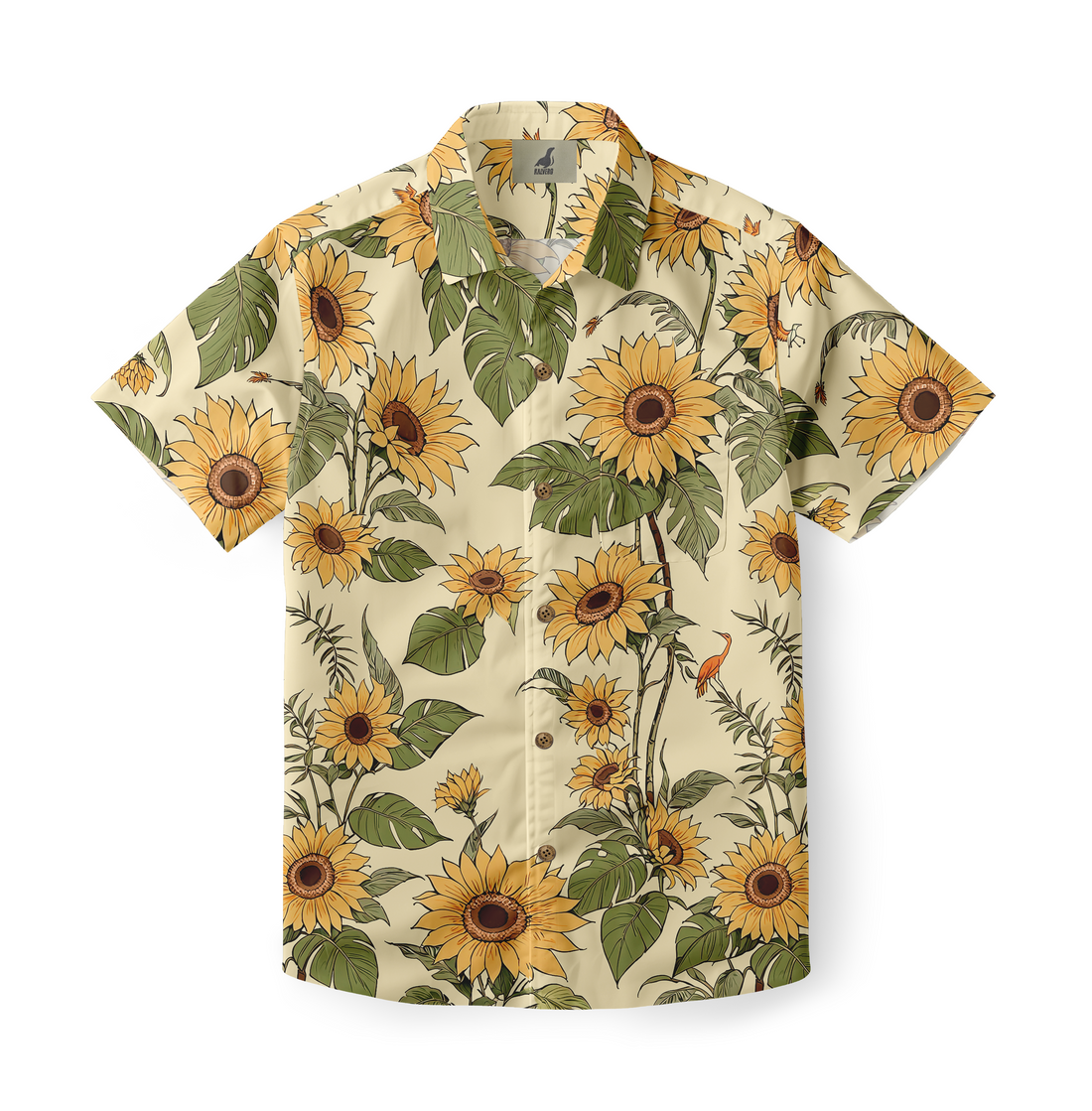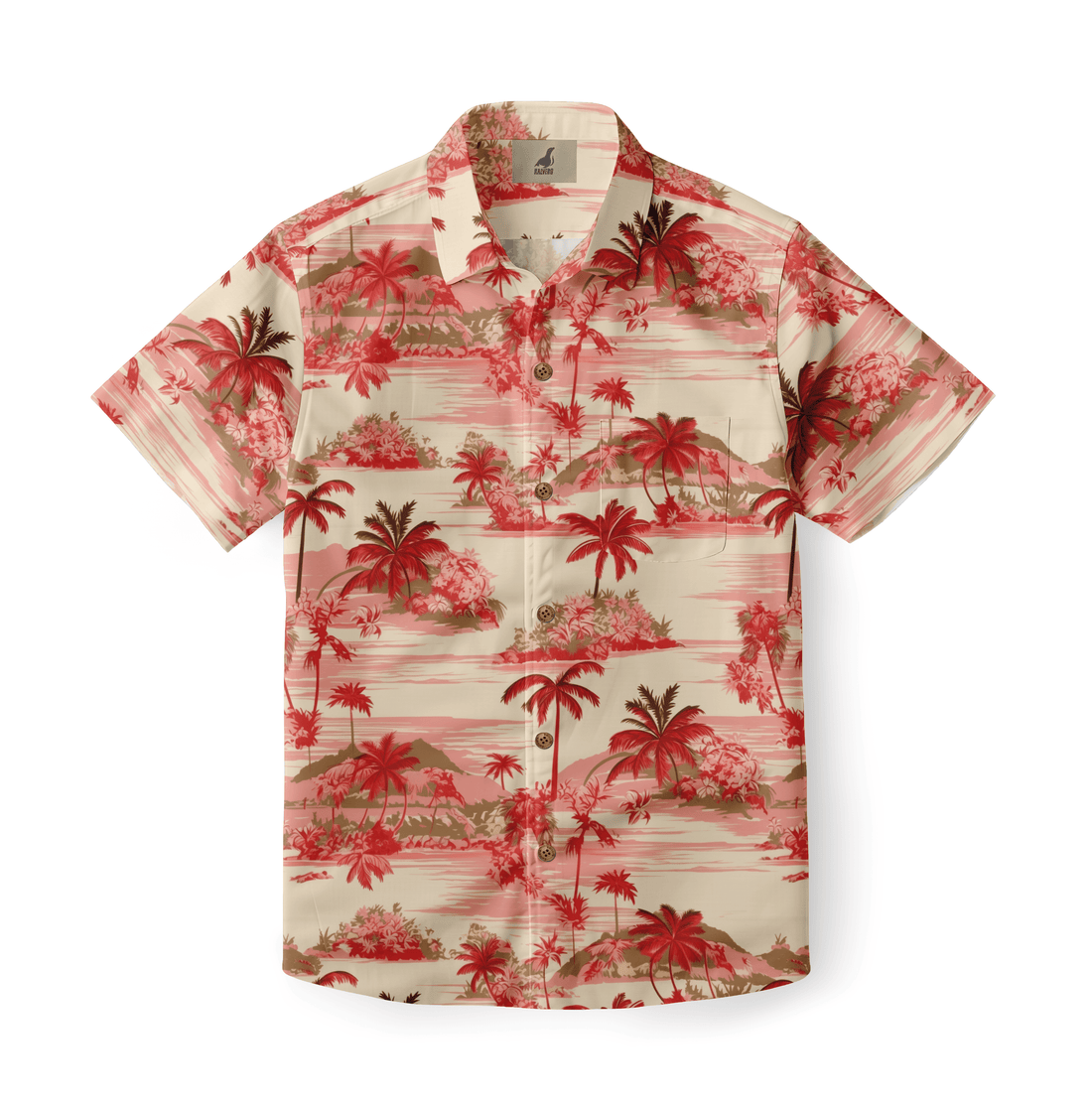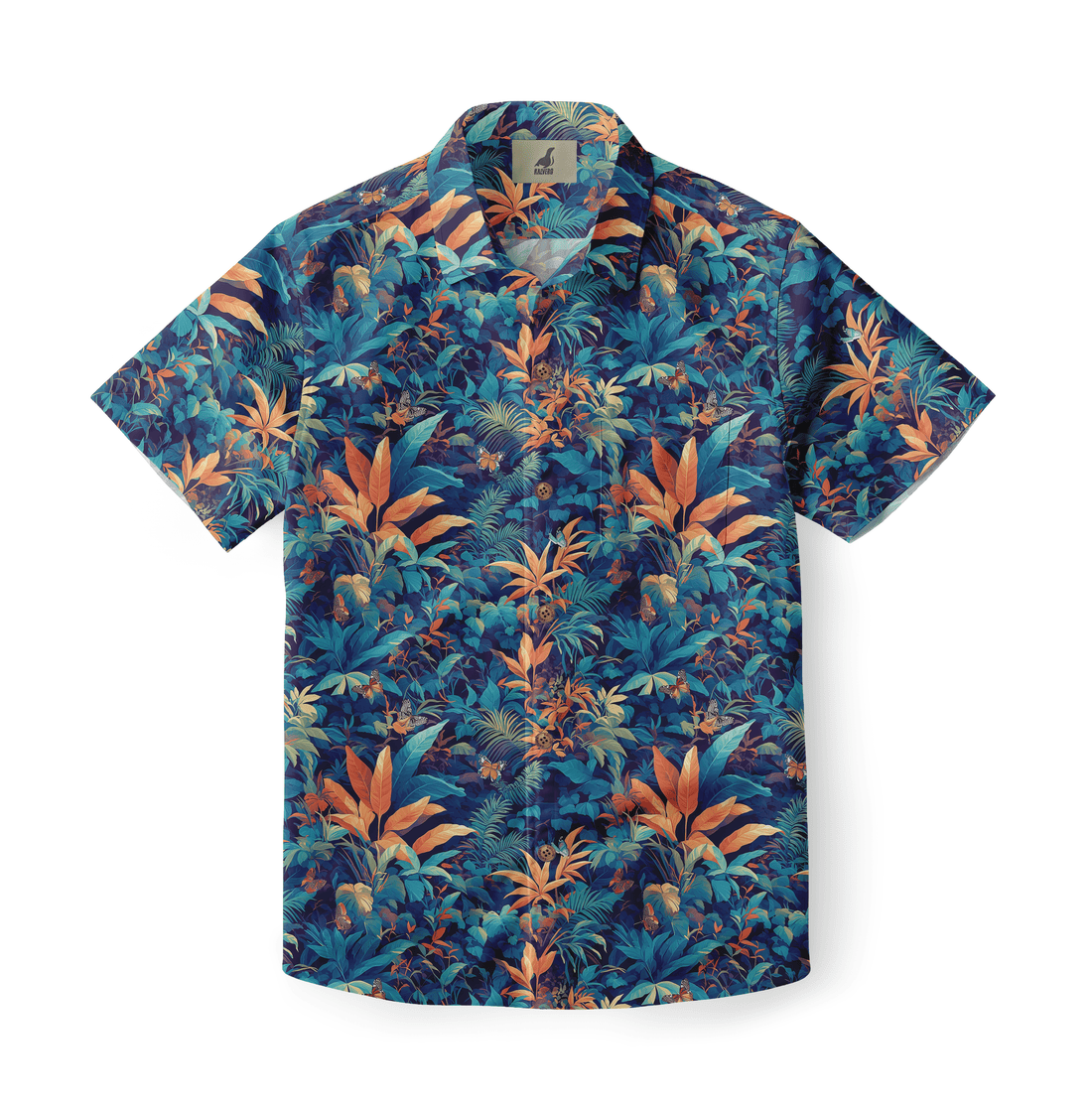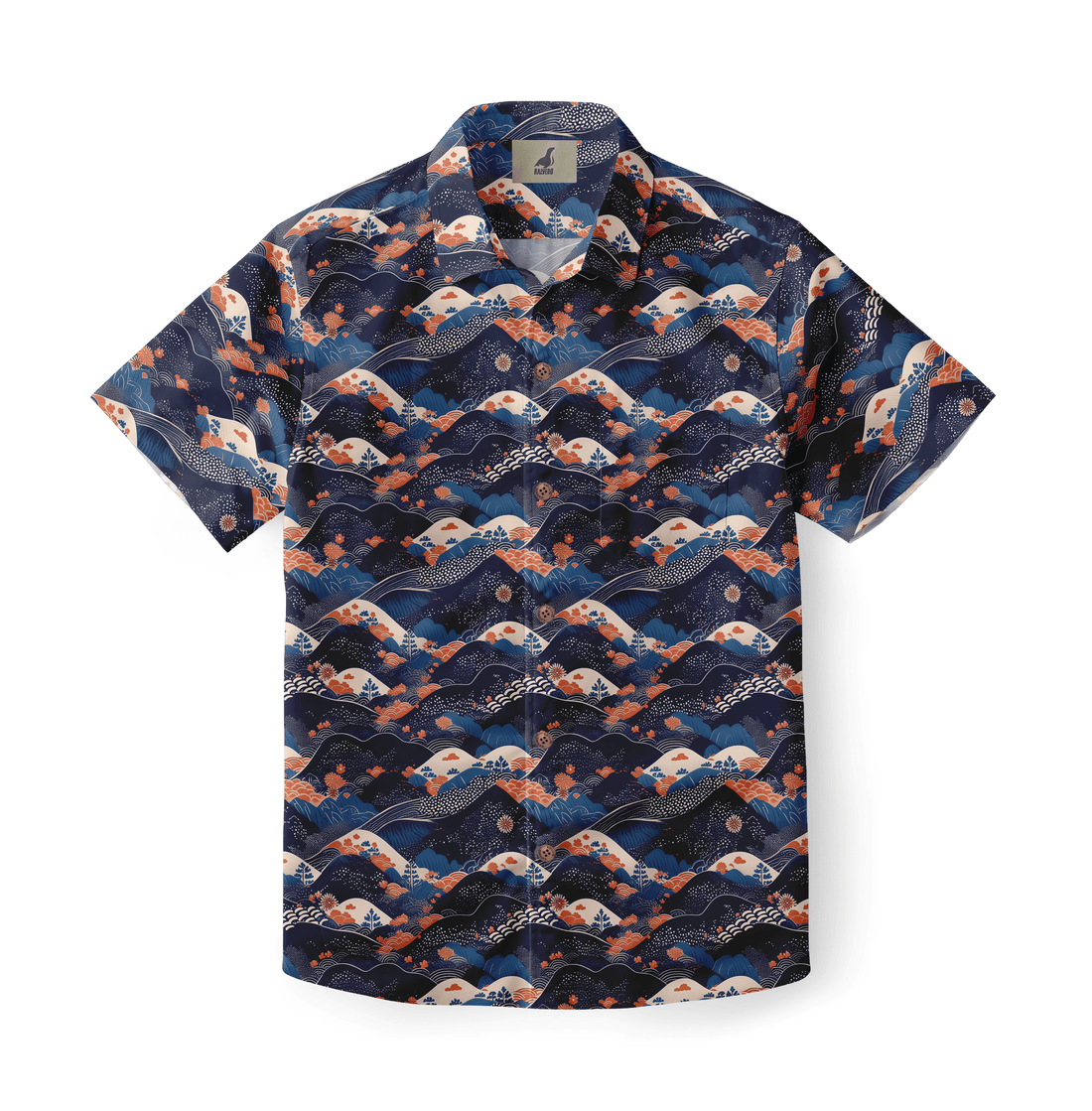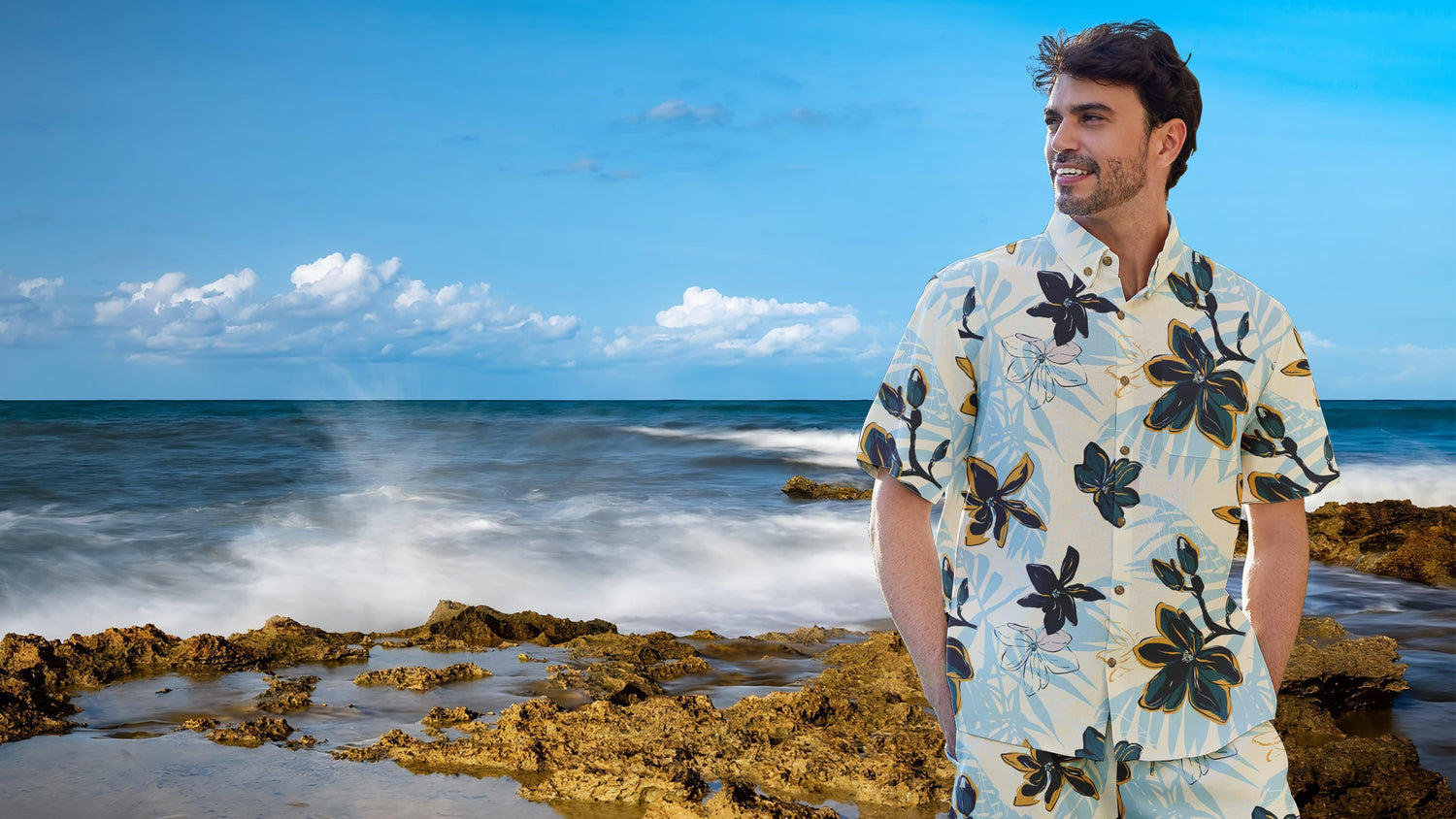How Hawaiian Shirts Became a Symbol of Sustainable Fashion began as an aesthetic shift and evolved into an ethical movement. Early aloha shirts were made for tourism and leisure, prized for bold prints and relaxed cuts. Over recent years, designers and buyers started demanding lower-impact fabrics and transparent sourcing. Producers responded by offering recycled-polyester blends, organic cotton, and low-water dye processes. Consumers then rewarded brands that documented material origins and labor practices. Social platforms amplified visible repair, resale, and rental stories that showcased longevity. These intertwined trends converted a novelty item into a vessel for circular fashion principles. The result is that aloha shirts now signal both style and environmental awareness to many shoppers.
Origins meet circular ideas
How Hawaiian Shirts Became a Symbol of Sustainable Fashion rests on cultural roots and modern circularity. Aloha shirts historically repurposed leftover textiles and surplus prints. That practice resonated with circular fashion aims when brands revived archival fabric use. Small ateliers began cutting shirts from deadstock bolts, reducing landfill-bound material. Designers also upcycled vintage shirts into new silhouettes to honor provenance. Local sewing collectives offered repair services to extend garment life and preserve pattern history. Consumers responded positively to visible reuse cues and clear storytelling. This practical lineage from resourceful local production to modern circular strategies helped aloha shirts move beyond seasonal novelty into sustainable symbol status in many niche markets.
Materials and low-impact dyes
How Hawaiian Shirts Became a Symbol of Sustainable Fashion requires materials that lower ecological burden. Brands switched from conventional rayon to regenerated viscose, organic cotton, and recycled polyester blends. These alternatives reduce water and chemical footprints when certified and processed properly. Reactive low-water dye systems and digital printing minimize wastewater and offer precise color control. Plant-based inks provide compostable print options for some ranges. Fabric certification, such as GOTS for organic cotton or GRS for recycled content, reassures buyers about chain integrity. Testing for colorfastness and hand feel ensures technical and aesthetic parity with legacy fabrics. This material pivot preserved the shirt’s drape and print clarity while aligning product lifecycles with sustainability goals.
Supply chains and local production
How Hawaiian Shirts Became a Symbol of Sustainable Fashion grew stronger as supply chains localized. Shorter supply loops decreased transport emissions and improved traceability. Brands partnered with regionally based mills to shorten lead times and secure consistent dye lots. Microfactories and cooperative workshops reduced idle stock by producing on-demand and via small batches. Purchasing strategies prioritized suppliers who disclosed worker conditions and fair pay practices. Certification audits and transparent contracts became standard for credible labels. Local production allowed easier QC and quicker remediation for defects. These operational changes gave consumers tangible evidence that aloha shirts could be made both ethically and with measurable ecological savings compared to conventional imports.
Design, longevity, and care
How Hawaiian Shirts Became a Symbol of Sustainable Fashion also depended on design choices that encourage longevity. Designers emphasized classic cuts and restrained prints for seasonal durability. Reinforced seams, better stitch density, and higher GSM fabrics countered fast-fashion wear-out. Labels included clear care instructions to preserve finish and minimize dye bleed. Repair kits or visible patch pockets invited owners to mend instead of discard. Offering mix-and-match palettes helped garments remain relevant across wardrobes. Warranties and repair services extended product life further. These design and aftercare measures turned single-season purchases into durable staples, giving aloha shirts credible longevity credentials in sustainable wardrobes.
Practical sustainability moves for aloha shirts
-
Source certified recycled or organic fibers to cut raw material impact.
-
Use digital printing and low-water reactive dye to minimize effluent.
-
Implement deadstock panels and limited runs to avoid overproduction.
-
Offer repair services and clear care instructions to extend wear life.
-
Provide trade-in and resale channels to keep garments in circulation.
After the list, implement these moves through concrete policies and operations. Sourcing certified fibers reduces hidden environmental cost and builds traceable narratives. Digital printing reduces excess inventory by enabling short runs and fast color changes. Deadstock panels lower waste while creating unique visual language for collections. Repair services create customer loyalty and reduce return rates for defects. Trade-in and resale programs recapture value and reduce pressure for new production, closing loops in the product lifecycle while reinforcing the aloha shirt’s sustainable symbolism.
Retail, resale, and rental models
How Hawaiian Shirts Became a Symbol of Sustainable Fashion scales when retail models evolve. Retailers introduced buy-back programs and curated resale storefronts to keep shirts circulating. Rental platforms included aloha shirts in vacation wardrobes, reducing single-use purchases. Pop-up swaps and repair clinics attracted engaged customers and built community credibility. Wholesale partners offered lower MOQs for sustainable capsule ranges to reduce deadstock risk. Data-driven reorder planning cut overproduction by aligning supply with verified demand. These commercial experiments showed that a shirt's lifespan could extend through multiple owners, and that circular retailing kept product value intact while cutting per-use ecological cost dramatically.
Certifications and consumer trust
How Hawaiian Shirts Became a Symbol of Sustainable Fashion depends on trustworthy certifications and transparent communication. Labels like GOTS, GRS, and OEKO-TEX help verify fiber claims and harmful-substance limits. Third-party wastewater audits for dye houses confirm low-impact processes. Brands publish mill lists and batch data to build trust with skeptical buyers. Independent lab tests for colorfastness and UPF performance add technical credibility. Clear labeling of recycled content percentages prevents greenwashing and sets realistic expectations. When consumers can verify claims independently, purchase confidence rises. Credible certification thus became a cornerstone in transforming aloha shirts into a widely recognized sustainable garment category.
Marketing authenticity and storytelling
How Hawaiian Shirts Became a Symbol of Sustainable Fashion required credible storytelling that tied craft to impact. Brands documented maker stories with photos and timelines that explained material flows. Transparent cost breakdowns occasionally revealed fair wage premiums, helping shoppers justify price differences. Visual campaigns highlighted repair, resale, and second-life narratives to show circular outcomes. Influencers who visited mills or repair workshops amplified real process visibility. Avoiding vague sustainability language and citing specific metrics helped brands retain credibility. This honest storytelling linked cultural heritage with measurable environmental choices, making aloha shirts compelling tokens of responsible fashion for conscious consumers.
| Fabric | Sustainability Trait | Best Use |
| Recycled polyester blend | Lower virgin resource use | Travel aloha, fast-dry shirts |
| Organic cotton | Reduced pesticide use | Casual everyday shirts |
| Regenerated viscose | Uses wood pulp from certified sources | Soft drape and photo-ready shirts |
After the table, procurement teams should map fabric traits to product intents. Recycled polyester blends suit travel ranges where quick drying matters. Organic cotton performs well in daily-wear shirts that must breathe. Regenerated viscose preserves drape for premium collections while reducing raw resource extraction. Use the table during sourcing to align sustainability goals with merchandising plans and lifecycle expectations. These alignment steps convert abstract sustainability principles into concrete purchasing decisions that support both brand values and operational feasibility.
Next steps for brands and buyers
How Hawaiian Shirts Became a Symbol of Sustainable Fashion invites deliberate next steps from both brands and consumers. Brands should adopt measurable KPIs for waste, water, and labor, and publish annual progress. Buyers ought to prefer products with verifiable certifications and clear end-of-life options. Collaboration across the supply chain helps standardize low-impact dye methods and fabric recycling. Retailers can trial rental or resale pilots to test circular business viability at scale. Finally, community engagement through repair clinics and swaps deepens customer relationships and builds long-term loyalty. Taken together, these actions cement the aloha shirt not only as a style statement but as a practical symbol of sustainable fashion practice.
Frequently Asked Questions
What certification should I look for when buying a sustainable Hawaiian shirt?
Seek GOTS certification for organic cotton and GRS for recycled content to verify fiber claims. OEKO-TEX confirms low levels of harmful substances and is useful for finished garments. For dyes and printing, request documentation of low-water reactive dye processes and wastewater audits from dye houses. UPF ratings matter if sun protection is relevant for your use. Independent lab tests for colorfastness and wash stability add practical assurance. Check for mill transparency and batch numbers, which help trace material provenance. When brands publish these credentials alongside maker stories, buyers can verify claims and make informed purchases aligned with real sustainability metrics.
How can resale and rental reduce the environmental impact of Hawaiian shirts?
Resale extends the garment’s useful life, reducing the need for new production and saving raw materials and energy. Rental models shift consumption from ownership to access, especially for vacation or single-event use. Both approaches lower per-use environmental impact and reduce landfill pressure. Platforms that manage cleaning and logistics efficiently minimize additional carbon costs. Successful resale depends on quality and perceived value; durable construction and neutral design palettes improve resellability. Trade-in incentives encourage returns and feed stock into authenticated secondhand channels. When brands design shirts with resale and rental in mind, they close loops and reinforce the shirt’s role as a sustainable wardrobe staple.
Are quick-dry or recycled fabrics less comfortable than traditional rayon?
Comfort depends on fabric construction, not merely fiber origin. Modern recycled polyester blends and regenerated viscose achieve drape and softness comparable to traditional rayon. Knits and weave density influence hand feel and breathability significantly. Brands frequently blend fibers to combine quick-dry performance with softness. Finishes matter too; low-impact softening agents can improve comfort without heavy chemical use. Always test a garment’s hand and drape in person when possible, and read technical specs for GSM and stretch percentage. High-quality recycled and regenerated fibers offer both comfort and reduced ecological burden, making them viable alternatives to conventional rayon.


